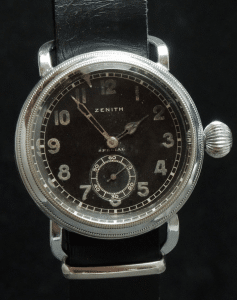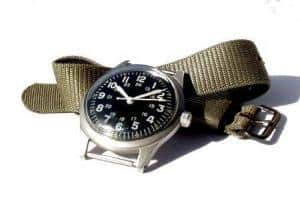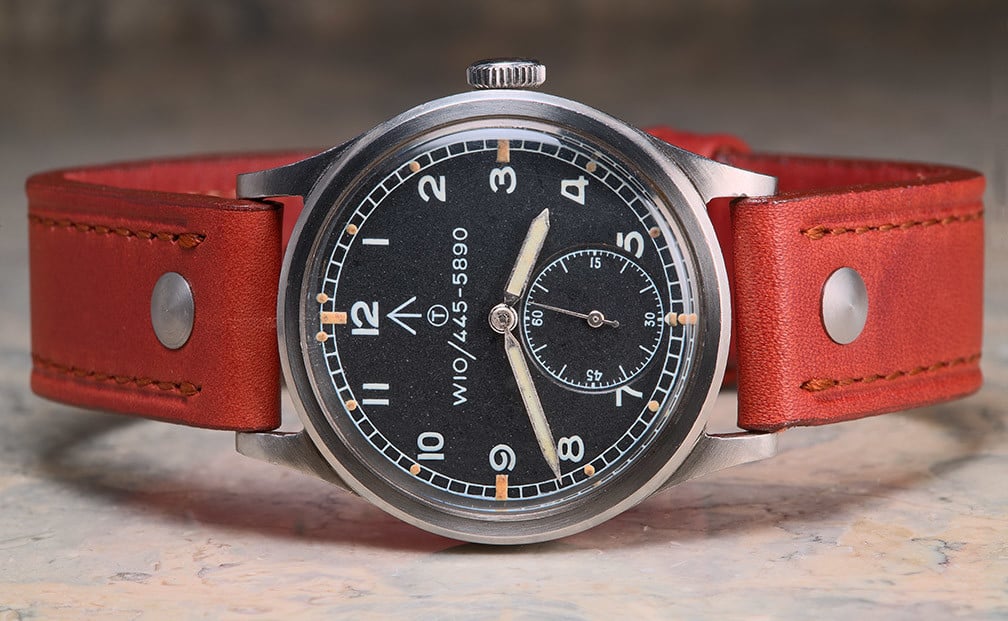Collecting military wrist watches has many devotees; it is a vast, fascinating subject which enthralls a large number of amateurs and a few connoisseurs.
Experience can be gained in many ways: by talking to members of the services themselves or by consulting watch companies’ promotional literature, for instance. Books on the subject are few and far between, and translations do not always exist. The military wrist watch field is one in which hands-on experience is vital.
Not only do military wrist watches have interesting technological features; they also have historical connections which can again be used as the basis for a collection. Some enthusiasts collect only World War II infantry wrist watches, for example.
Military wrist watches first appeared during World War I, when it was discovered that it is difficult to shoot at someone while you are trying to check the time on a pocket watch. Also, by the time a pocket watch has been extracted, someone on the opposite side might have seized the opportunity to take a pot shot at you!

Military wrist watches seem to bear plenty of clues as to their provenance, but few direct pointers. Generally speaking, a pilot’s wrist watch will have a center second hand, while an infantryman’s or ordinary foot soldier’s watch may have a second-hand dial above the six on the watch face. Pilots’ wrist watches also tend to be a little larger, so that they can be strapped to the leg and used as navigational tools when needed.
In the U.S. During World War II, the products of the Hamilton watch company played an important part in naval operations. A special undersea Hamilton watch was made for the underwater demolition teams; for obvious reasons precision timing was a critical part of any mission, so these wrist watches played a significant role.
You may come across the World War I term “hack watches”. One of the jobs of a plane’s navigator was to give his crew a time check so that they could synchronize their watches, and this was known as “hacking”. These “hacks” were often Hamilton wrist watches.

Marking on the case backs of military wrist watches will give a clue as to whom they were issued and for what purpose. “6B” may be found on pieces issued to the British RAF and to the crews of aircraft carriers; “W10” on British land army watches. American watches are often marked with a US Army patent and the name of the corps or division. WWW on cases stands for waterproof wrist watch. Military wrist watches often came with a webbed canvas strap and had black dials.
Many military wrist watches were and still are produced by some of the big watch companies, such as IWC, Omega, and Jaeger-LeCoultre (in very rare instances); others are produced by companies specializing in military supplies. Military wrist watch production is not confined to war time: contemporary pieces find their way into stores and auctions, and their provenance is easier to verify.
Not all the names found on military wrist watches will be familiar – names such as Smiths, which produced watches for the British RAF; CWC, which made both quartz and mechanical wrist watches; and Vertex, for instance. All are well known for their military productions and are ideal for the novice. Before making a purchase, make sure that you are buying a genuine military wrist watch and not just a souvenir piece.






